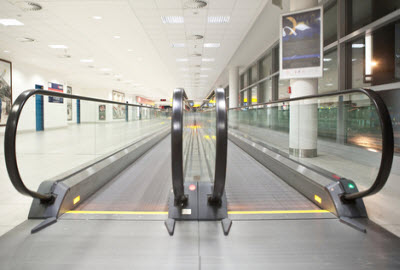Overhaul Aviation Support For Disabled To Meet Future Demand
- Written by Roberto Castiglioni
 The times are ripening for an overhaul of access to aviation; rethinking facilities and services for passengers with reduced mobility is crucial to meet future demand.
The times are ripening for an overhaul of access to aviation; rethinking facilities and services for passengers with reduced mobility is crucial to meet future demand.
Six months ago, Reduced Mobility Rights embarked in the first ever privately led organic project of reviewing accessibility and services for passengers with reduced mobility and other disabilities in airports across the European Union.
The project, which originally began as the mapping of facilities and support services, has evolved into the crafting of aviation and airport industry guidelines of innovative solutions and support processes to meet the evolving needs of people traveling by air.
Blending the airport review project with decades of professional experience in different business environments, and the personal experience of carer for a person with a disability, has created the unique opportunity to translate theory into practice.
Thinking out of the box to meet future demand
More often than not, observing the world around us is a source for inspiration to create solutions that improve our quality of life. However, we are often too busy, sometimes just lazy, to observe, which makes us miss the opportunity for betterment. Let’s see an example of when observing reality meets thinking out of the box.
Going through an airport’s security checkpoint is passengers’ most dreaded part of traveling by air. Picture yourself bagging liquids in those tiny plastic bags, digging all metal items from your pockets, removing belts and shoes, going through security doors and still end up being patted down because of that coin in your back pockets. Now imagine having successfully cleared security. You need to put your belt back on, wear your shoes, get all your belongings from the tray while people pile up right behind you.
Eventually, in San Francisco someone sat down, observed the process, and thought out of the box. The solution to “humanise” the security checkpoint experience is called Recompose Area. Located just past security, the recompose area offer travellers a place to re-dress and gather their belongings in a friendly, non-rushed environment after passing through the checkpoint. As passengers regroup, they can check flight status on adjacent displays. The recompose area is a signature feature of San Francisco International airport Terminal 2.
The most common response to meet the needs of passengers with reduced mobility is to ensure
airports provide wheelchair assistance. The reasoning behind is simple: he can’t walk; we need to wheel him to the gate. Is this the right answer? I am afraid not.
First of all, we need to identify and categorise potential users to best assess which solutions meet the needs of passengers with reduced mobility.
Mild forms of reduced mobility, most commonly the inability to walk long distances, are typical of the elderly population and represent close to 50% of all requests for assistance at airports.
To best comprehend future trends, we must keep in mind the impact “baby boomers” will have on the aviation industry in the years ahead. Over 65s will double in 20 years’ time.
The main difference between today’s elderly population and baby boomers is that the latter are very mobile and well accustomed to air travel. What they will share with today’s older flyers are age related mobility problems and the determination of not associating their reduced mobility to disability. It may come odd to some, but even today many elderly choose to struggle to make their way through terminal buildings instead of asking for assistance to avoid being classified as disabled.
Going forward, a mixed solution of metric information on screens, dedicated security checkpoints, walkways, “courtesy”  buggies, and over 60s reserved areas by luggage belts could support these travellers without hampering their dignity.
buggies, and over 60s reserved areas by luggage belts could support these travellers without hampering their dignity.
Today, most screen displays in airports only indicate information such as flight and gate number, time of departure, and status. Selected few indicate the time needed to walk to the gate. Only a handful indicates the distance in meters, or yards. The latter is the key information a person with mild reduced mobility needs to decide if he can make it on his own, and how long will he or she take to walk the distance.
Dedicated security checkpoints for the over 60s allow more comfortable passage for the elderly by removing the anxiety deriving from the knowledge of taking a bit longer to get through the process.
Most modern airport buildings are fitted with moving walkways, which significantly shorten walking
The benefits of safeguarding independence and dignity of passengers with mild reduced mobility are far reaching. Most importantly, they allow focusing assistance on those passengers with greater need for support, hence improving availability and quality of services. At the same time, they positively impact management and performance of the entire passenger flow, making the airport segment of air travel a more enjoyable experience for all travellers.
Have you been to an airport recently? How would you describe the experience? Do you think this article provides viable solutions for the future of air travel? Have your say
About the author
Founder and Editor-in-Chief of Reduced Mobility Rights, Roberto Castiglioni is an expert of airport accessibility, management and support procedures of passengers with disabilities and air travel related disability regulations. He has been a frequent flyer for the past three decades and has several years of experience as travelling partner of a passenger with reduced mobility.
Roberto provides accessibility and access consulting services to airports and airlines. He is a member of the UK Civil Aviation Authority Access To Air Travel Working Group. He is also a member of the Easyjet Special Assistance Advisory Group. Esaag provides Easyjet with strategic guidance and practical advice on the evolving needs of passengers requiring special assistance.










